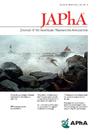醋酸甲酯醇是终末期肾病患者高血糖的一个被忽视的原因:一个多药并用的病例。
IF 2.5
4区 医学
Q3 PHARMACOLOGY & PHARMACY
Journal of the American Pharmacists Association
Pub Date : 2024-09-12
DOI:10.1016/j.japh.2024.102248
引用次数: 0
摘要
目的:病例摘要:一位 75 岁的非英语国家男性患者患有 T2DM、高血压、经皮冠状动脉介入治疗后冠状动脉疾病状态,以及继发于 IgG Kappa 肾病的 ESRD,每晚接受腹膜透析,他报告说食欲不振、体重下降,抑郁症状加重。由于出现了这些症状,他的肾病医生给他服用了醋酸甲地孕酮(MA),这是一种常用于 ESRD 的药物,有助于刺激食欲和改善体重。开始使用醋酸甲地孕酮后,由于其糖皮质激素的特性,他的血糖(BG)明显恶化。患者开始使用基础胰岛素控制高血糖,但血糖改善甚微。由于患者被转诊至内分泌科临床药剂师处接受糖尿病管理,因此发现他的体重在开始服用度拉鲁肽后开始下降,导致体重下降了 11 公斤(12.9%)。采用纳兰霍算法,他的评分为 6 分,属于可能的反应。患者的内分泌科和肾内科团队同意停用 MA 和度拉鲁肽,因为这两种药物对食欲和血糖以及格列美脲胰岛素的影响截然相反。停用 MA 后,患者的血糖得到了严格控制,而停用度拉鲁肽后,他的食欲、体重和情绪都得到了改善:本病例报告反映了在 ESRD 中使用多种药物的潜在影响,导致患者治疗效果不佳和药物相互作用。当务之急是对所有患者,尤其是透析患者进行全面的药物调节。同样重要的是,医护人员要认识到可能具有糖皮质激素特性的药物会导致高血糖。在护理团队中加入临床药剂师可协助进行药物协调、筛查药物相互作用和多重用药以及优化慢性病管理。本文章由计算机程序翻译,如有差异,请以英文原文为准。
Megesterol acetate as an overlooked cause of hyperglycemia in end-stage renal disease: A case of polypharmacy
Background
This case report highlights an overlooked cause of hyperglycemia and risk of polypharmacy in a patient with end-stage renal disease (ESRD).
Case summary
A 75-year-old non-English speaking male with type 2 diabetes mellitus, hypertension, coronary artery disease status post percutaneous coronary intervention, and ESRD secondary to immunoglobulin G kappa nephropathy on nightly peritoneal dialysis reported a loss of appetite, decrease in weight, and an increase in symptoms of depression. As a result of these symptoms, his nephrologist initiated megestrol acetate (MA), an agent commonly used in ESRD to help stimulate appetite and improve weight. After starting MA, his blood glucose (BG) significantly worsened, due to its glucocorticoid properties. Basal insulin was started to manage his hyperglycemia, but there was minimal improvement in BG. As the patient was referred to the endocrinology clinical pharmacist for diabetes management, it was identified that his weight loss began after starting dulaglutide, which led to a weight loss of 11 kg (12.9%). The Naranjo algorithm was used, and he had a score of 6, which is a probable reaction. The patient’s endocrinology and nephrology teams agreed to discontinue MA and dulaglutide as they resulted in opposing effects on appetite and BG, as well as insulin glargine. The patient’s BG was tightly controlled off MA and his appetite, weight, and mood improved off dulaglutide.
Practice implications
This case report reflects the potential effects of polypharmacy in ESRD, resulting in poor patient outcomes and drug interactions. It is imperative that a comprehensive medication reconciliation is completed on all patients, especially for patients on dialysis. It is also important for healthcare professionals to be cognizant of medications that may exhibit glucocorticoid properties, which can cause hyperglycemia. Including a clinical pharmacist in the care team can assist with medication reconciliation, screening for drug interactions and polypharmacy, and optimizing chronic disease management.
求助全文
通过发布文献求助,成功后即可免费获取论文全文。
去求助
来源期刊
CiteScore
3.30
自引率
14.30%
发文量
336
审稿时长
46 days
期刊介绍:
The Journal of the American Pharmacists Association is the official peer-reviewed journal of the American Pharmacists Association (APhA), providing information on pharmaceutical care, drug therapy, diseases and other health issues, trends in pharmacy practice and therapeutics, informed opinion, and original research. JAPhA publishes original research, reviews, experiences, and opinion articles that link science to contemporary pharmacy practice to improve patient care.

 求助内容:
求助内容: 应助结果提醒方式:
应助结果提醒方式:


